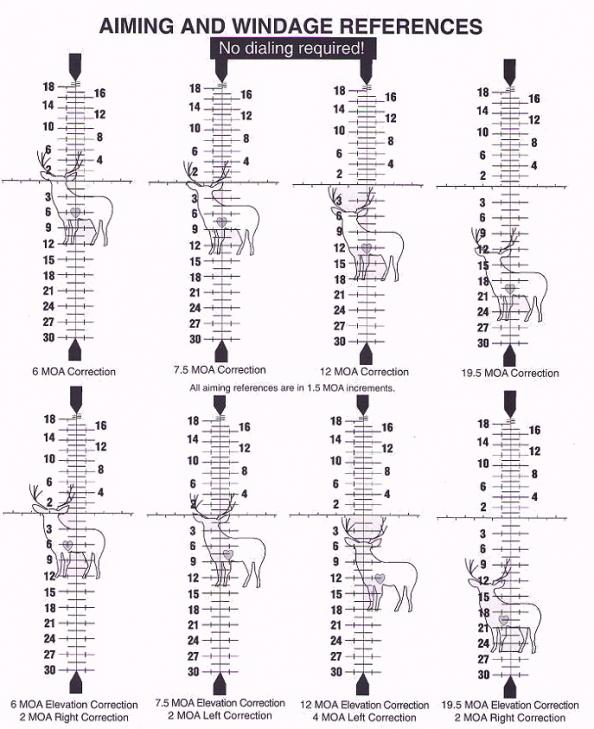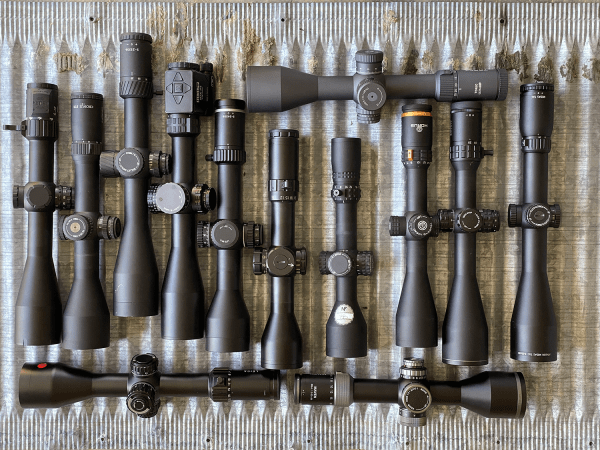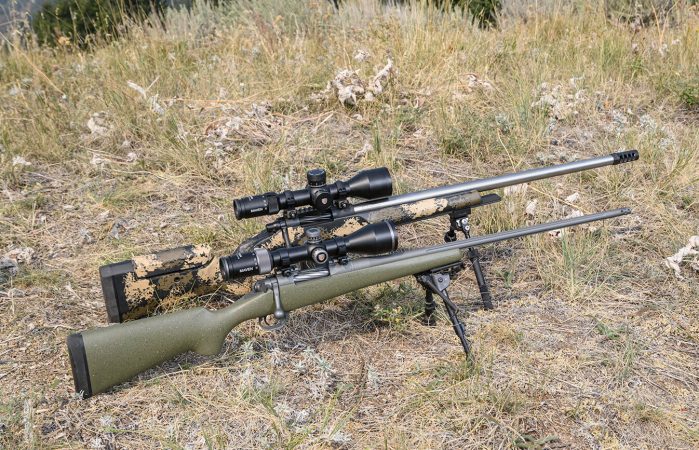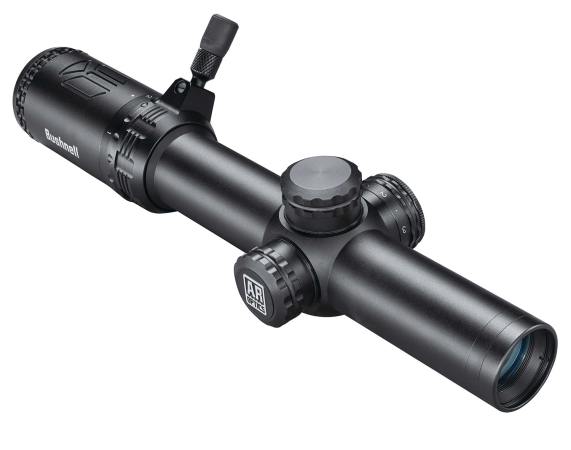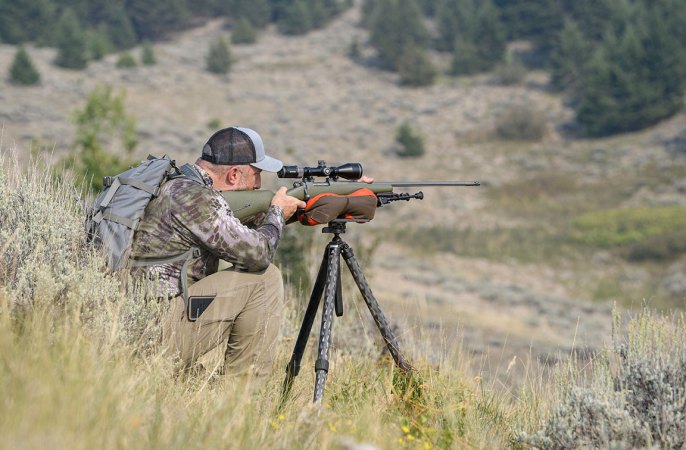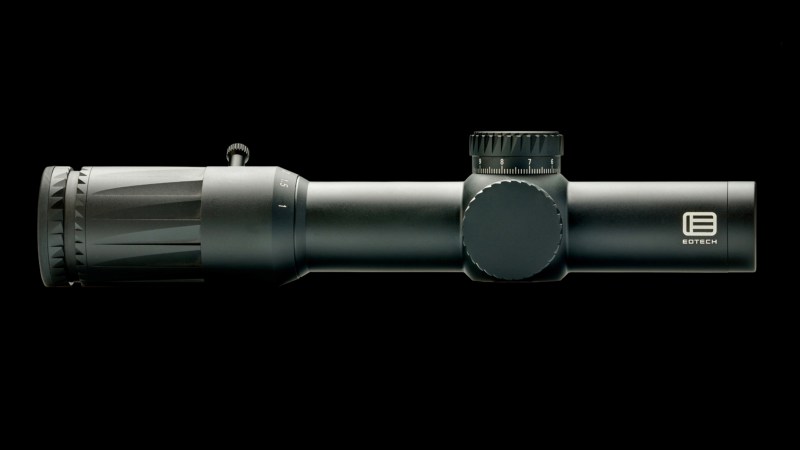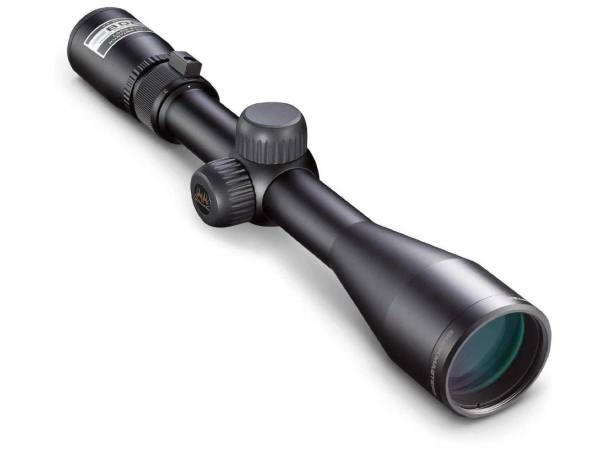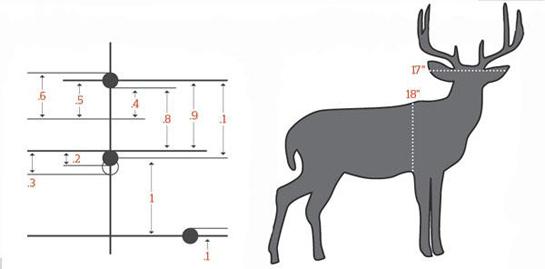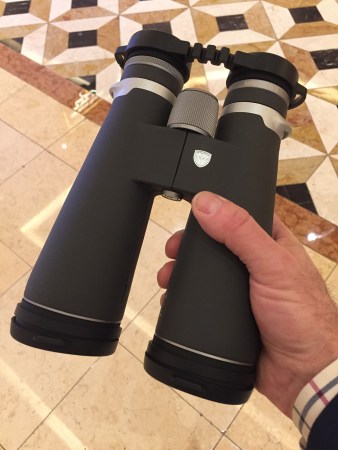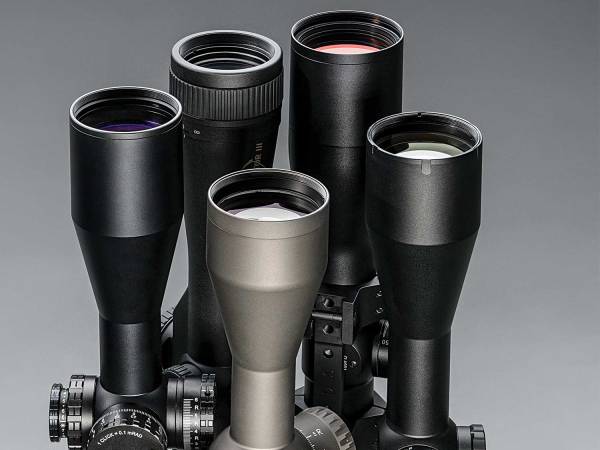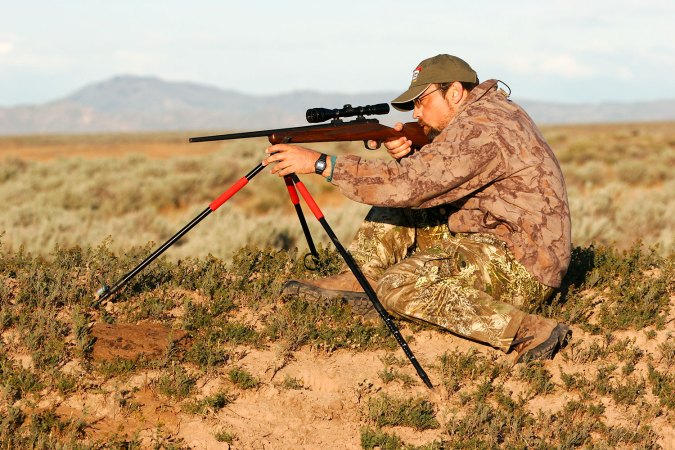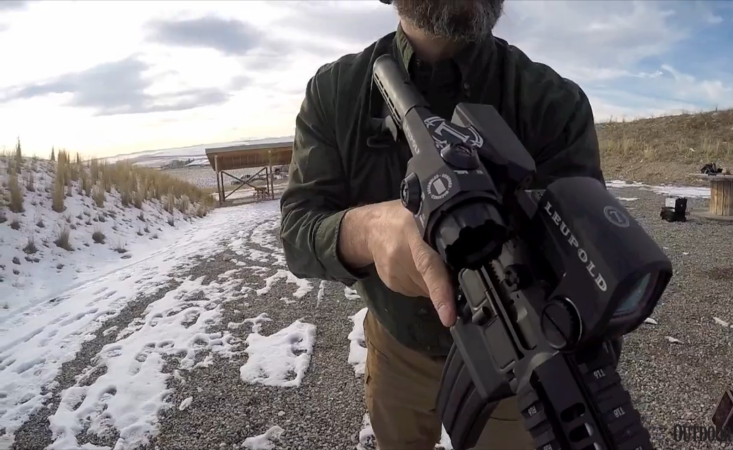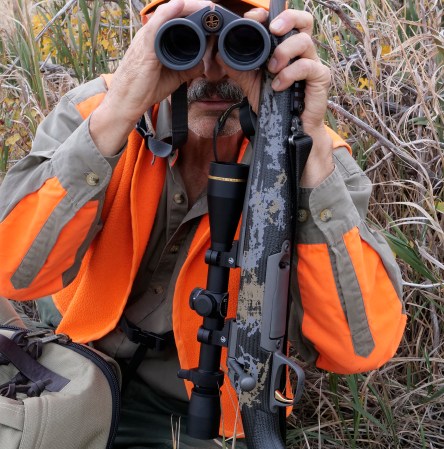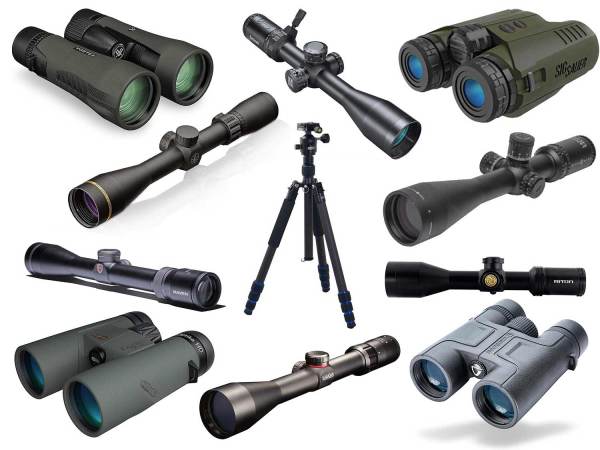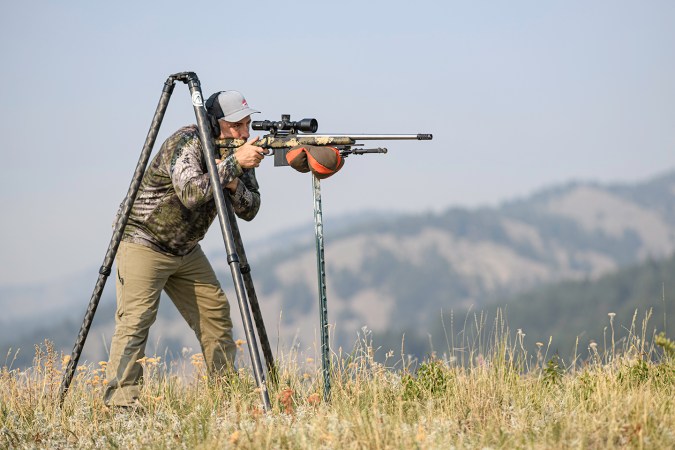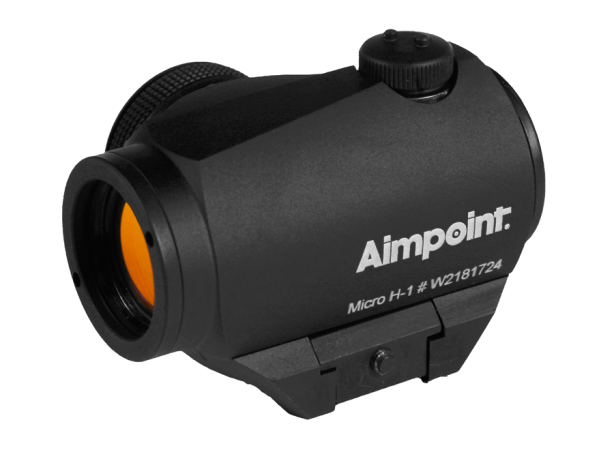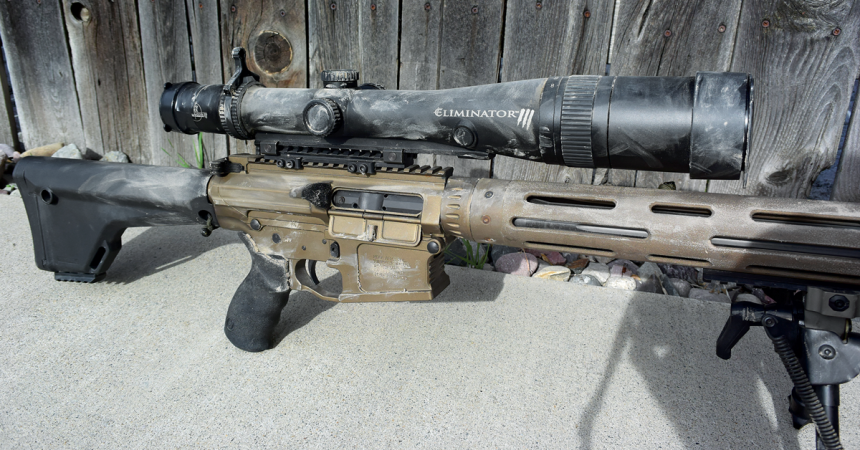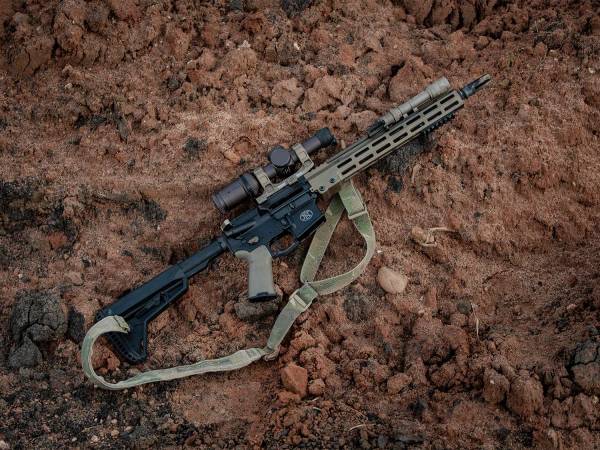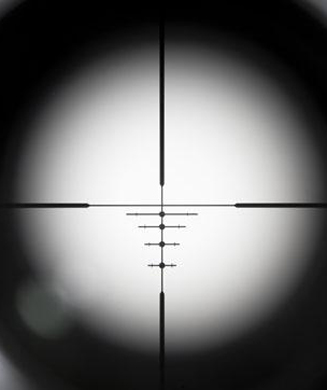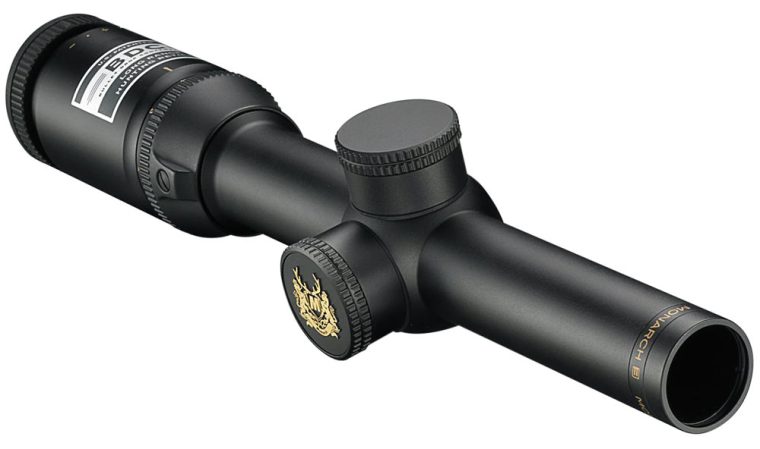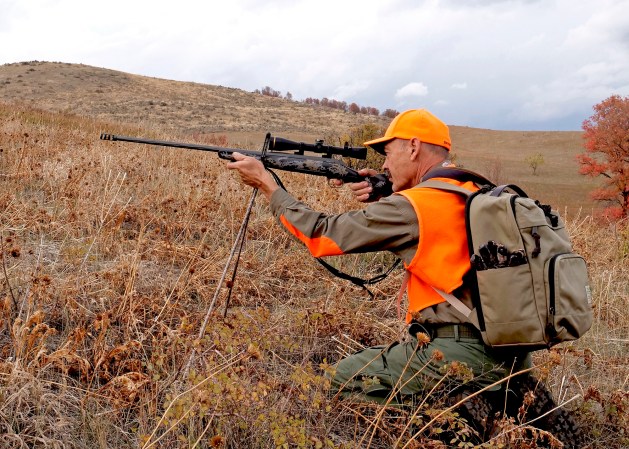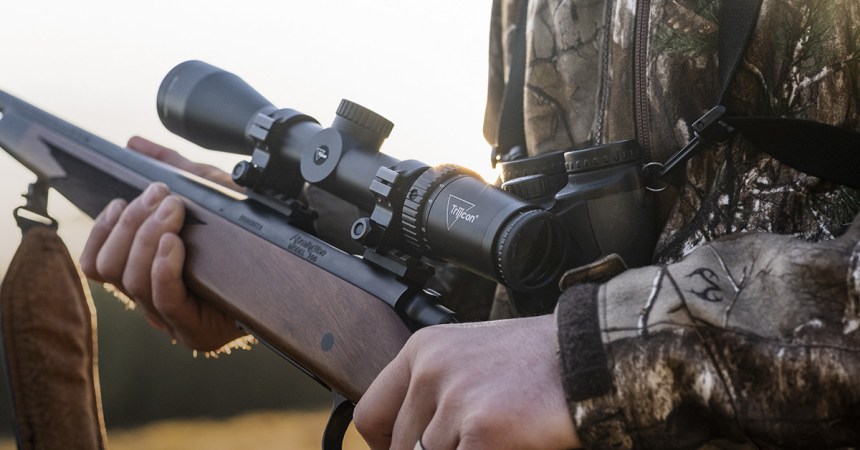We may earn revenue from the products available on this page and participate in affiliate programs. Learn More ›
For long-range precision rifle work I’ve come to favor optics with some type of milling reticle in the first-focal plane (FFP) that have .1 mil corrections on the windage and elevation turrets. The ability to estimate range with these reticles and the ease with which the shooter can make adjustments for follow-up shots give FFP/mil-mil scopes a huge advantage over other systems.
That said, even companies that specialize in these expensive “tactical” optics, such as Nightforce, sell way more scopes that are MOA based.
There are a number of reasons for this, but the biggest factor is tradition. Most shooters in America were taught on MOA scopes that have ¼-inch click adjustments at 100 yards and anything that deviates from that seems odd. Likewise, most of those scopes have reticles in the second focal plane, so the first time a person looks through a scope where the reticle seems to grow and shrink as the power setting is changed, it doesn’t feel right. Plus, there’s also the very practical issue of cost. Second-focal plane scopes are less expensive to make and simple duplex reticles are also cheaper than fancy milling reticles with all kinds of hash marks, scales and reference points.
But the MOA v. Mils argument isn’t just about training and cost. There are serious long-range shooters out there that advocate the superiority of MOA over Mils and one of the arguments these folks make is valid: namely that you can mike finer adjustments to your point of impact dialing with a MOA scope than a Mil scope. (A ¼ MOA knob moves the point of impact (POI) about a ¼ inch at 100 yards, whereas a .1 mil knob moves the point of impact .36 inches per click. At 1,000 yards, that same MOA click is moving the POI 2.5 inches while the .1 mil click has moved the bullet 3.6 inches.)
One of these advocates is Darrell Holland, the owner of Holland Shooters Supply. Among all the goodies Darrell has made for long-range shooting is his ART reticle–for Advanced Reticle Technology–that has an MOA based scale for holdover and wind correction.
Darrell’s made this with hunters in mind, but it also can work well on steel.
I’m playing around with one of these scopes on the 6.5 Creedmoor that I had Darrell build for me and will report back on my results. I also plan to attend one of his long-range shooting schools later this summer.
It would take a lot of convincing, but, who knows, maybe I’ll convert back to being an MOA shooter.

